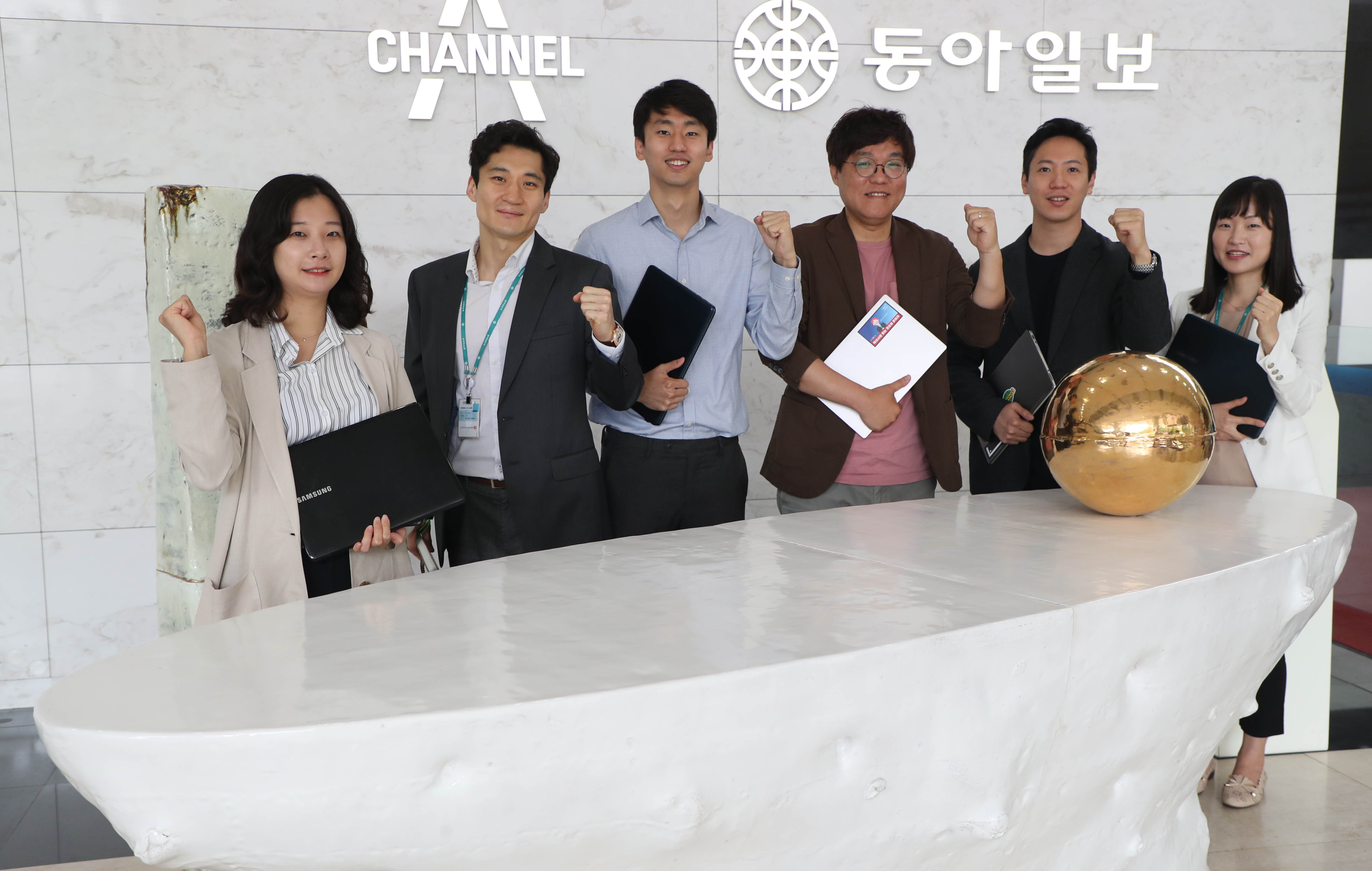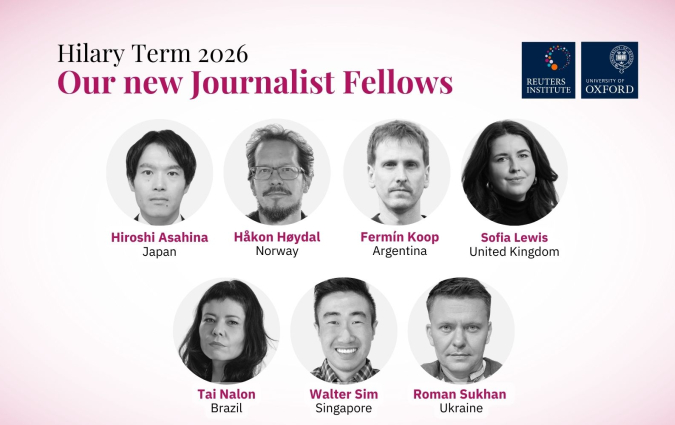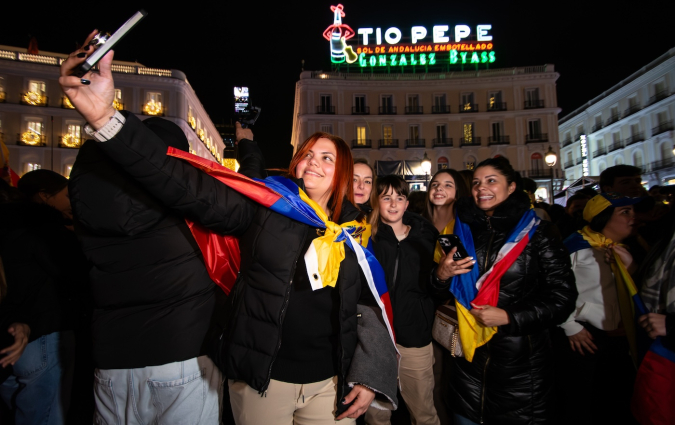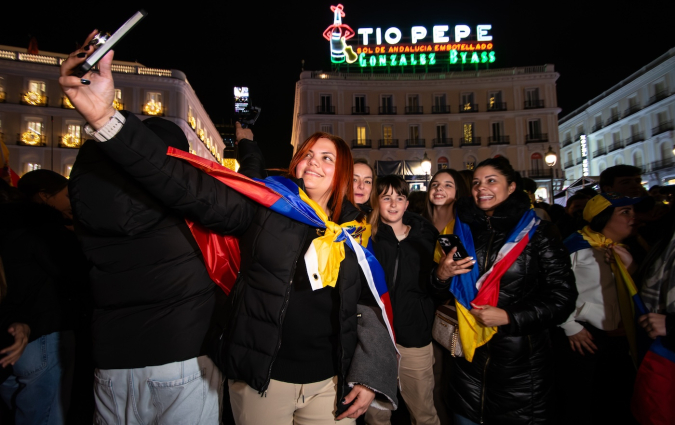This newspaper removes reporters from beats for months to create digital projects

The Dong-A Ilbo’s first hero content team. | Credit: Dong-A Ilbo
In 2018 Google CEO Eric Schmidt explained how the company encouraged its staff to work on “20% time”: spend 80% of their time on regular projects and keep the other 20% free to work on personal projects. What if newsroom leaders would adopt a similar idea?
In 2020 South Korean daily newspaper The Dong-A Ilbo removed reporters from their daily beats and teamed them with developers and designers as part of what they call “the hero content programme.” This team pitches and produces digital investigations with extended deadlines. The goal is to help the paper innovate its storytelling for digital platforms, challenge received ideas of how to report, and shift newsroom culture away from print.
Platforms, aggregators and algorithms dominate digital news consumption in South Korea. The country’s newspaper sector has struggled to adapt to digital change, according to the Digital News Report 2022. Only 10% of the South Koreans in our survey used The Dong-A Ilbo online on a weekly basis. The general news broadsheet published its first edition in 1920. According to its website, it has a daily print circulation of around one million.
The so-called hero content programme recently completed its fifth story. I spoke to Saemmool Lee, The Dong-A Ilbo’s Head of Digital Innovation about the challenges she faced when implementing the programme and shifting newsroom culture.
Q. Why did you launch the hero programme?
A. We care about our digital reputation, what we produce and the kind of content we write. We also have a mission to find future digital revenue for the company.
The start of the hero programme coincided with the 100th anniversary of The Dong-A Ilbo. We talked about our long-term future and produced an internal report on the challenges we face. We realised that just numbers aren’t enough. We are a relatively big company in South Korea. Our stories are consumed many times and people know our brand. But do they remember what we do? There’s plenty of news media and therefore plenty of competition for us in South Korea, so it can be hard to make stories exclusive and memorable.
South Korean audiences typically consume news via search engines and aggregators, which provide similar user experiences for all news media. If we want to compete, we have to write a lot and create catchy headlines. It’s hard to be differentiated in that environment. We realised we had to invest 20-30% of the resources of our newsroom and lots of time to create this kind of differentiated content.
Q. How does the programme work?
A. We started small. Our editor-in-chief selected four reporters to be part of the team. He wanted to involve people from different beats and with journalists with different reporting experience. Some had been with us for three years. Others, more than 10. Two project managers completed the team.
We gave them unlimited time, freedom of production, freedom to choose any topic for reporting and innovation, and priority support [from other teams and departments]. The goal was to experiment and to invest. That’s why there was total freedom of production. When the programme first launched, no one knew how it would run. But after publishing the first project, we got a great reaction from readers, so we did a second project.
The process starts with reporters pitching their ideas for the project. In this process, they use different methods, including talking with sources, researching documents and checking audience data to see what the issues and blindspots are. Our third project about K-pop idols, for example, was motivated by our audience data. We saw that the younger generations consumed less news on our platform (compared to other generations). We discussed how we can engage them more on our own platform. Reporters brainstormed about the topics and we decided to pursue K-pop idols, hoping that we could bring younger audiences more to our story.
Each project can take as long as four or five months. After an initial discussion of potential subjects and a research period, the team will narrow down the subjects to a number they can pursue. It can take around a month to finalise the idea and the story angle, with another one or two months focused on production.
We want to rotate all newsroom staff through the hero team. But with 300 people in the newsroom it would take too long. So we urge newsroom reporters to pursue hero content in their daily work, even if they are not part of the original task force. One reporter has dedicated one day a week for 3-4 months to this kind of content, for example, while doing her usual job for the rest of the week.
Q. What kinds of reporting has the project produced?
A. Our hero project on organ donation after brain death was a response to a lack of in-depth reporting on the subject. It happens suddenly in remote places and typically reporters can’t get there in time to cover it. The hero team has many more resources, so they could just go when this happened. Reporters went by high-speed train to Busan and straight to where a transplant was happening.
The first part of this ‘rebirth’ project was multimedia combining text, photos, video and infographics [in a long-form, vertical-scrolling format]. We promoted the story through social media including Facebook, Instagram, Twitter and YouTube.
We used multimedia storytelling to immerse our audience in the page even though the story is quite long. We put various videos and images from the scene [from the organ transplant management centre to the hospital] so the audience feel like they are there while reading the text.
The first episodes of this project were more than 10,000 words long, which is quite long, but this varies for other episodes.
Another hero project focused on the city of Ansan, which hosts the most immigrants in South Korea producing interesting cultural phenomena. There have been reports before about conflict in the city, but we hadn’t really seen the very colourful culture and texture of the city in news reports. Because we had unlimited time, reporters from our hero team went to Ansan every day for several months. It was the most thorough story about immigration in Ansan ever published.
These are all the hero programme projects in order:
- "Jeungbal (Evaporation)" – A story about people who chose to isolate themselves from society.
- "Hwansaeng (Rebirth)" – the story about organ donation from brain deaths.
- "Idols, Made in Korea" – a story about being a K-pop idol.
- "Gongjon (Co-existence)." – the story about immigrants in Ansan.
- "Sanhwa (Sacrifice)" – a story about public workers (men in uniform) who sacrifice their lives for others.
Q. How do you assess the programme’s success?
A. We ask: are you proud enough [of the outcome] to call something you have spent 4-5 months on “hero content”? We really think it’s an opportunity for reporters to create their own masterpieces. It’s why they decided to pursue a career in journalism. That’s our criteria for success.
We have seen how numbers can distort reporters’ behaviour. We know how to increase pageviews quickly with a catchy headline or by putting an article as a top story [on the homepage] for a long time. We do check the numbers for these projects, but it’s not the core [of what we are trying to achieve]. Reporters are happy with the chance to work differently. They are also proud of winning awards, even though that’s not a criterion for success.
We don't have a paid subscription model in our news platform. South Korea is a unique country where the majority of news consumers consume the news through search engines, not news media websites. Advertisement is a big part of our business, but we also have various other types of businesses (events, forums, a sports business, for example).
Whatever we do for our business, we think that trust and reputation are a big part of what sustains our business. The hero programme really upgraded our branding and reputation not only from our readers but also with advertisers and business partners. When people (readers, sources, advertisers) refer to stories that The Dong-A Ilbo published recently, most talk about the hero projects after we started it. We think this is the power of branding.
We don’t have a paid offer, but our readers can subscribe for free to an issue, to a keyword or to the any content produced by a reporter. Once they do, they can see these content in their own personal account. It’s similar to following people on social media. Our goal is to increase the amount of active users and to foster the habit of visiting our platform. Since hero projects are not published very often, we don’t think it’s a good fit for this and we use regular series of news content for this kind strategy.
The presence of hero content team motivates reporters. It gives them something to aspire to. Even if they can’t report on something right away, they know that because of this programme, there is room to pursue their dream. It’s an investment for our company, giving this amount of time and resources to a group of reporters. In the immediate financial sense, it might be inefficient, but our reporters are very touched by this investment. They see that we are not just running this journalism company to make a profit.
A lot of reporters in South Korea are quitting their jobs because they are losing their purpose. Journalists aim for something meaningful and I think this [programme] is meaningful.
Q. What effect has it had on your newsroom?
A. These projects make reporters grow a lot. In their daily work, they wouldn’t spend that long debating a single pitch and discussing all the different possible angles. After completing this process, reporters tend to think big and enhance their decision-making skills about what we report and why.
It has increased the standard of reporting and writing. What might be enough reporting for a daily or weekly story is not enough for hero content. Everybody expects something high quality after 4-5 months of work. Reporters are pursuing more in-depth reporting and writing. It also lets them think about other modes of production and collaborate with other people, such as our video team and our designers.
Q. What challenges have you faced?
A. At first, it’s hard to come up with one idea to pursue together. Collaboration can be a challenge. Not a lot of reporters have previous experience working with designers and developers. Producing great outcomes isn’t easy, so teams feel very pressured. Reporters think they have to reach the same standards. They know that everyone will discuss the outcome and compare it with previous projects.
The hero programme has helped our staff understand the value of training. During the process, they learn by doing and from each other. Imposing the highest standards is more powerful than one editor’s feedback because everyone is watching the hero content team. You get lots of internal feedback and this gives you a better idea of how audiences will consume the final outcome.
Showing the outcome rather than telling was powerful for us too. For example, rather than just saying we have to produce more multimedia content, this creates a prototype for how we can deliver [stories] differently if we combine multimedia components. That kind of multimedia storytelling inspires other reporters in the newsroom. We’ve also attracted talent who mention hero content in their applications.
In every email we send you'll find original reporting, evidence-based insights, online seminars and readings curated from 100s of sources - all in 5 minutes.
- Twice a week
- More than 20,000 people receive it
- Unsubscribe any time




